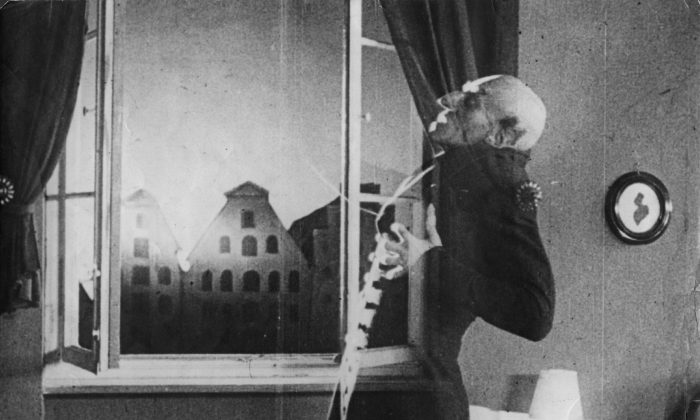Commentary
From the blood-sucking vampires of legend to the eerie undead depicted in films, the vampire myth has captivated audiences for generations. Inspired by Bram Stoker’s novel “Dracula” (1897), iconic movies like “Nosferatu—A Symphony of Horror” (1922), “Dracula” (1958), and “Nosferatu—Phantom of the Night” (1979) have brought these creatures to life on the big screen.
Vampires are depicted as demons who rise from their graves at night to prey on innocent victims, draining their blood and spreading their curse. Those bitten by vampires can become undead themselves, joining the dark world of the vampire.
The hunters of vampires face a formidable challenge, as these creatures possess superhuman strength and the ability to transform into animals like wolves or bats. Traditional defenses like garlic cloves, rosaries, and holy water can repel them, but true destruction requires decapitation or a wooden stake through the heart.
The vampire myth is ancient and widespread, symbolizing primal fears and the battle between good and evil. The image of a creature that emerges at night to draw victims into darkness is a powerful and threatening concept.
When examining the vampire myth, parallels can be drawn to the modern fiat money system. Operating under the cover of darkness, this system is often misunderstood by the general public. The creation of fiat money out of thin air and its inflationary effects are unknown to many, leading to unforeseen consequences.
Similar to vampires, fiat money drains the resources of its victims, benefiting a select few at the expense of others. The redistributive effects of fiat money primarily benefit commercial banks and the state, creating a system where the few thrive while the many suffer.
Ultimately, the fiat money system, like a vampire, enslaves its users, making them dependent on a system that benefits a privileged few. Just as vampires create minions, fiat money turns its victims into accomplices, perpetuating a cycle of dependence and inequality.
Fiat money creates a system that incentivizes debt and living beyond means, fueled by artificially low interest rates. This leads people to invest in assets like houses and companies due to the inflationary nature of fiat money, causing asset prices to continuously rise. Once individuals are exposed to fiat money, their financial well-being becomes dependent on the inflationary system and government intervention during crises, benefiting those within the system at the expense of others.
Those involved in maintaining the fiat money system, such as politicians, bureaucrats, and companies with government contracts, become like vampire thralls, feeding off the income of productive individuals. Holders of fiat money experience loss as its purchasing power decreases over time. The central bank keeps interest rates low, eroding savings in time deposits, savings accounts, and bonds.
The fiat money system, like a vampire, cannot withstand exposure to the truth. If people understood its negative effects, they would likely reject it, which is why there is little education on the topic. Central bank councils claim to fight inflation, but in reality, they perpetuate the system. Sound economic knowledge could dismantle the fiat money system.
Long-term prosperity and peace cannot be sustained under the current system, making it crucial to inform people about its flaws and encourage a shift towards a free market for money. By reducing dependence on fiat money and promoting innovation in the monetary sphere, the system can be dismantled. It is essential for the truth to be exposed to bring an end to the fiat money system.
Source link





